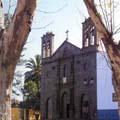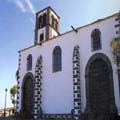History.
 It maintains its aborigine name, a guanche word that originated in Tagoror, a place where the native people’s Council of the Old took place. It was a vast kingdom governed by a Mencey called the King of Acentejo, who was noted for his bravery and love for his people.
It maintains its aborigine name, a guanche word that originated in Tagoror, a place where the native people’s Council of the Old took place. It was a vast kingdom governed by a Mencey called the King of Acentejo, who was noted for his bravery and love for his people.
The founder of Tacoronte was the Portuguese Sebastiao Machiado who took part in Tenerife ’s conquest.
The population settled around an ancient temple that later on was designated as a parochial church.
Tacoronte, dating from the constitution of 1812, becomes a municipality and the King Alfonso XIII concedes it the title of City on March 23rd of 1911.
The most notable relevant events in this last century are the development, set up and operation of a street car that joined the capital ( Santa Cruz) with La Laguna and Tacoronte. The first section between Santa Cruz and La Laguna was inaugurated in 1901 and it continued up to Tacoronte in 1904. Financed with Belgian capital, it had the honour of the presence of the Belgian King Leopoldo I in the inauguration of the first section.
 Places of Interest Historical
Places of Interest Historical
Casilda House
Second half of the XVIII century
Temple of La Caridad
XVII Century. Neoclassical high altarpiece, sculptures and anonymous paintings.
Temple of San Juan
Year of 1740. Baroque altarpiece and a San Juan Bautista from the middle of the XVIII century.
Parochial Church of Santa Catalina Martyr of Alexandria
It began its construction at the beginning of the XVI and was finished by the middle of the XVIII century. Of a Canary colonial style, it exhibits a well preserved Moresque panelling.
The oldest of the existing churches in Tacoronte, it is located in the most ancient area of the historical quarters, where houses of extraordinary architectural beauty can be found.